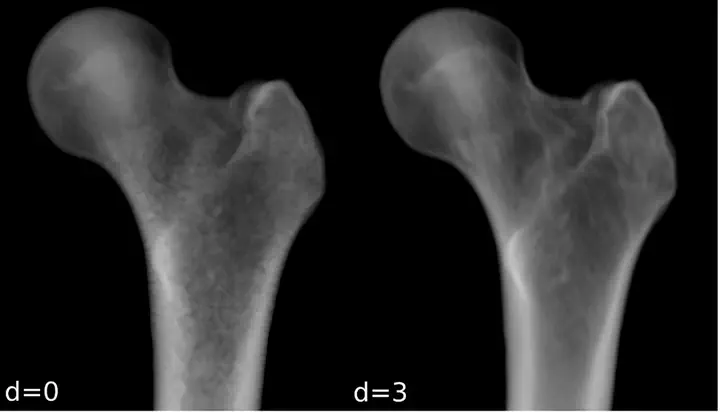Fast and Accurate DRRs for X-Ray Based Joint Surgery Planning

Abstract
Currently available planning systems for joint replacement, are often based on two-dimensional (2D) X-rays and only focus on the determination of the likely size of the prosthesis that could fit the patient’s anatomy. Patient-specific biomechanical parameters in such systems are usually neglected as they are difficult to deduce from 2D X-ray images. However, functional and biomechanical information helps to optimize surgical procedures and thus achieve a compromise between balanced joint loading and joint stability to restore optimal dynamic joint function and longevity. The key challenge lies in the estimation of the three-dimensional (3D) geometry of the patient’s anatomy from clinically available X-rays alone. Methods relying on statistical shape models have been shown to be a promising avenue to solve this problem (Dworzak et al. IJCARS 5(2),2010). In such a scenario, the 3D shape to be reconstructed from the X-ray is parameterized via statistical analysis on a suitable training set (so called statistical shape model or SSM). The optimal parameters are determined via a minimization process, in which the SSM is repeatedly projected to the X-ray plane and the deviation of this projection from the X-ray is quantified.Up to now, most objective functions measure deviations between boundary features (Baka et al., MedIA 16(6) 2011) of the projected model and the structure in the X-ray (e.g. silhouettes).This has the drawback of requiring a careful segmentation of the structure in the X-ray. We are extending the previous approach by using 3D volumetric shape models, instead of surface models, in combination with intensity models (e.g. averaged radio-opacity or -translucency) defined on the whole volume of the shape (SSIM).This allows for a direct comparison ofthe “deformed” model X-rays with the patient X-ray in the optimization process -without accurate prior segmentation.For efficient optimization an accurate and fast projection algorithm is crucial, since the objective function shall model a good match and will be evaluated many times. Here, we present a hardware accelerated method for SSIM projection.